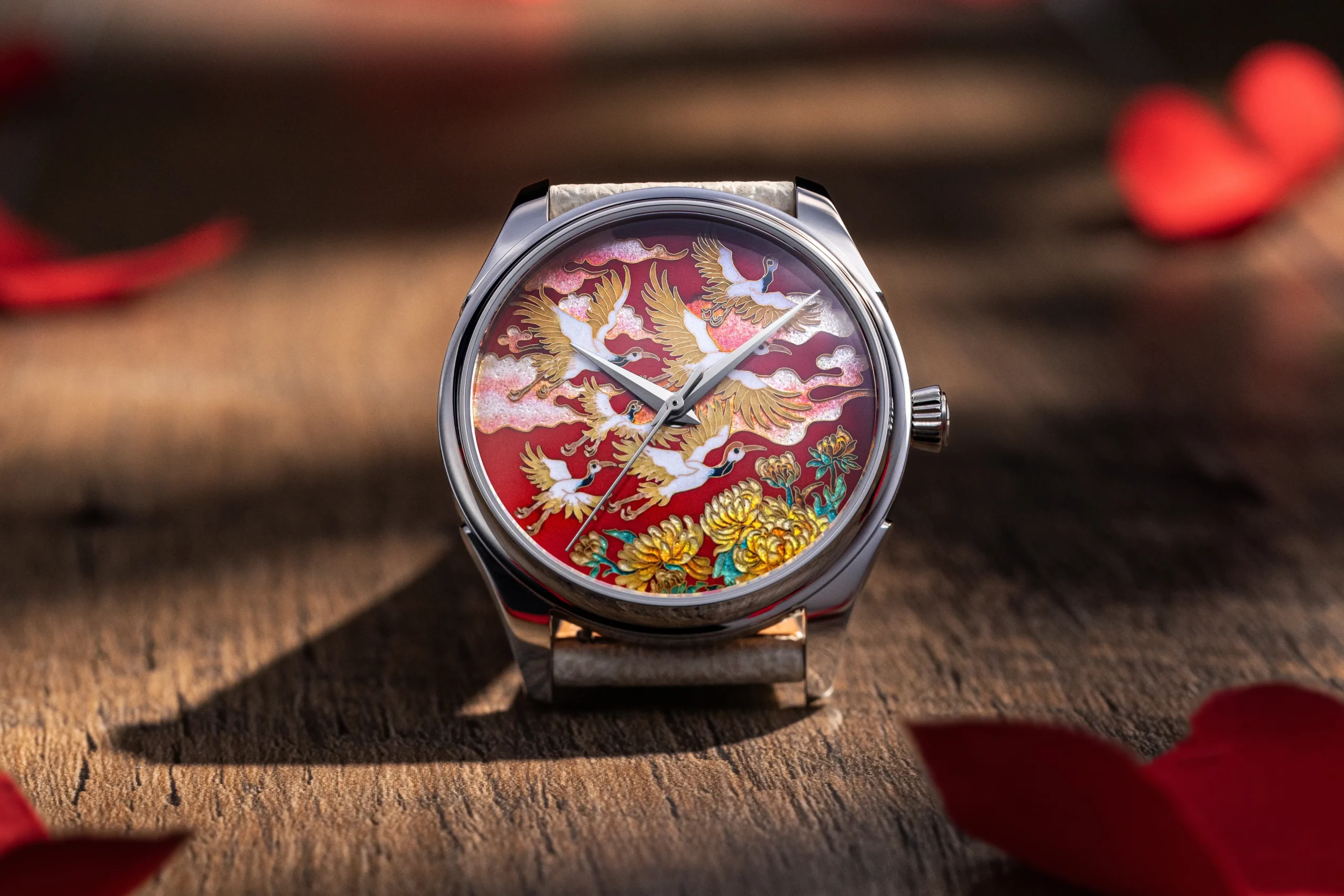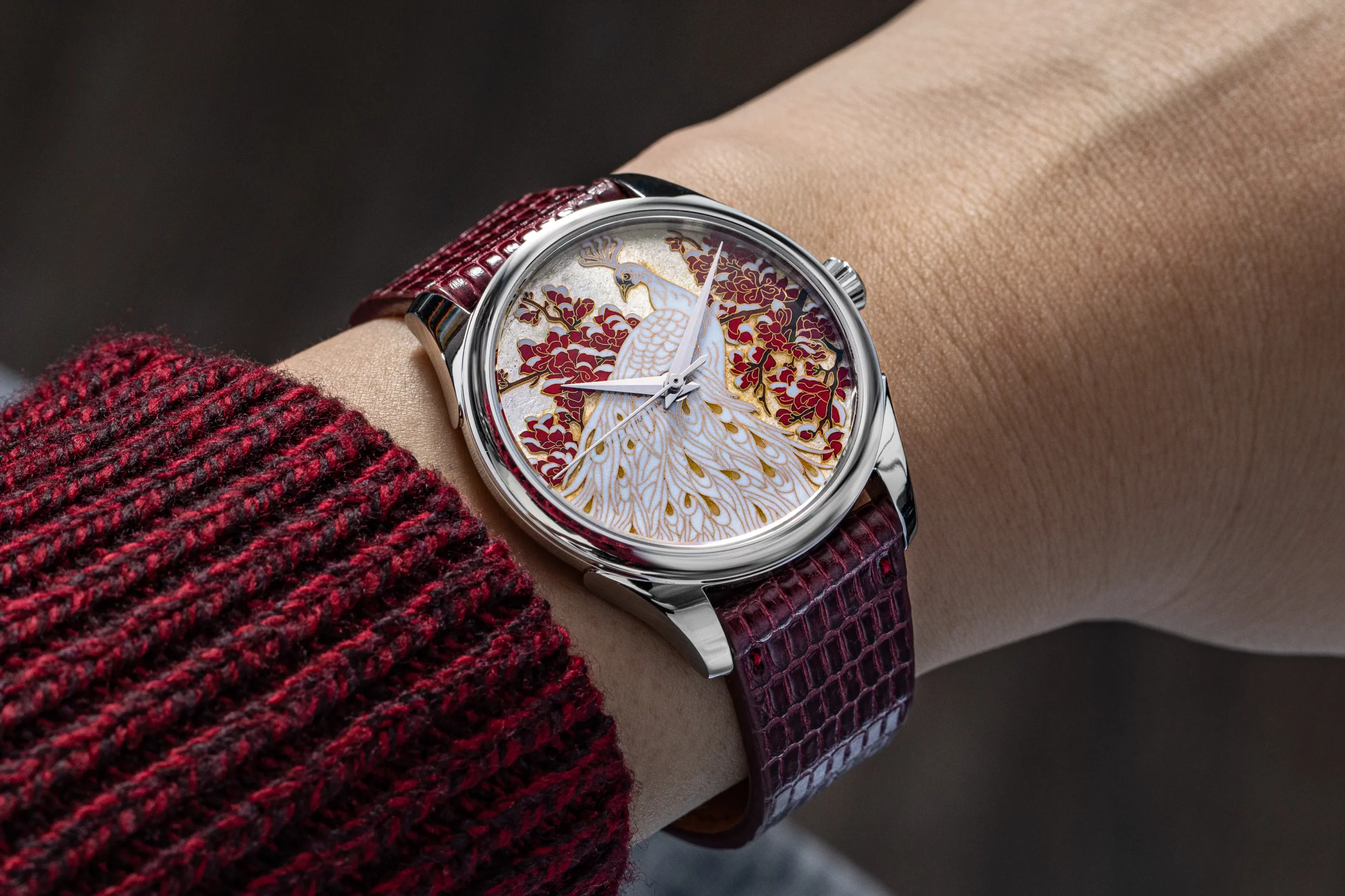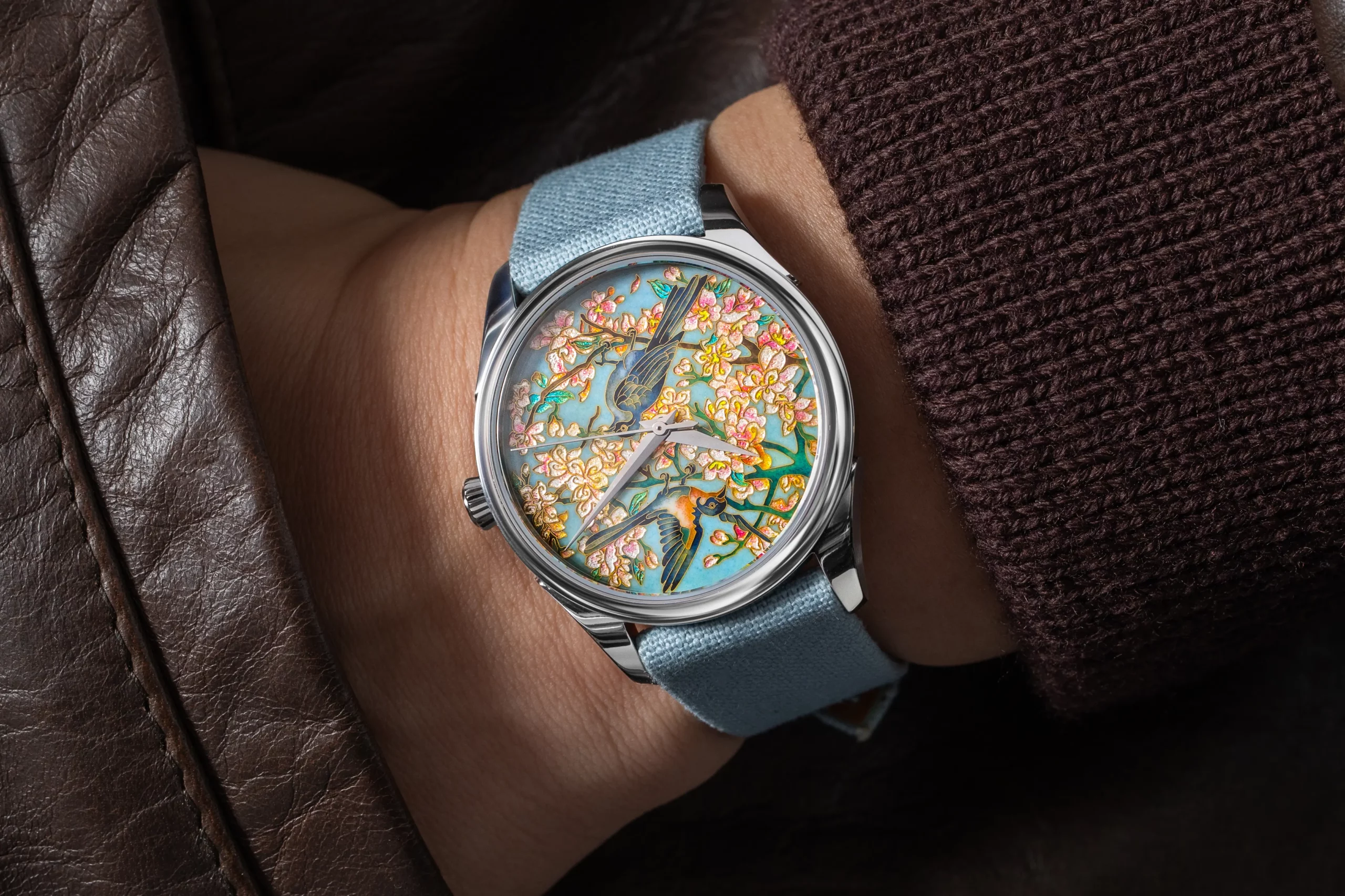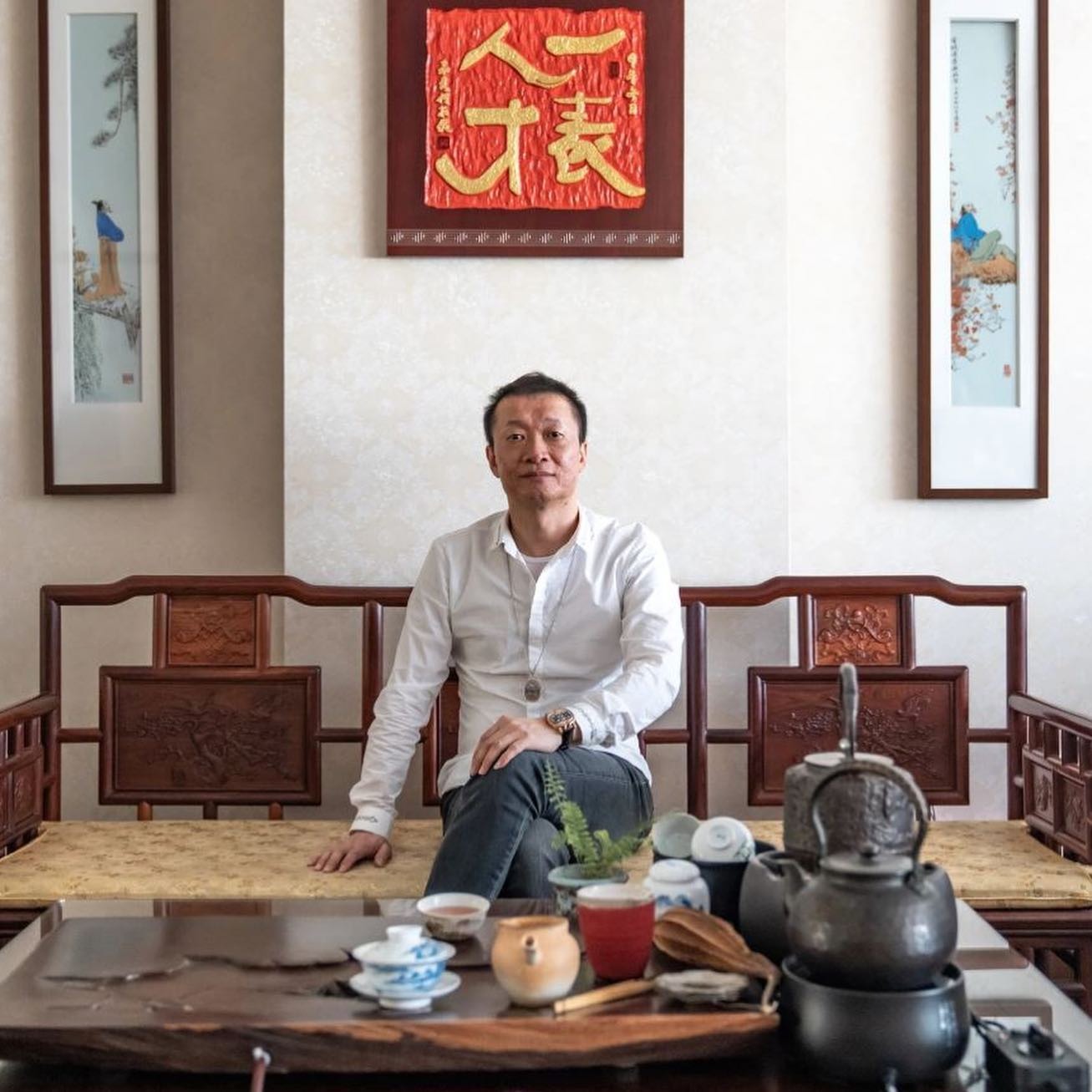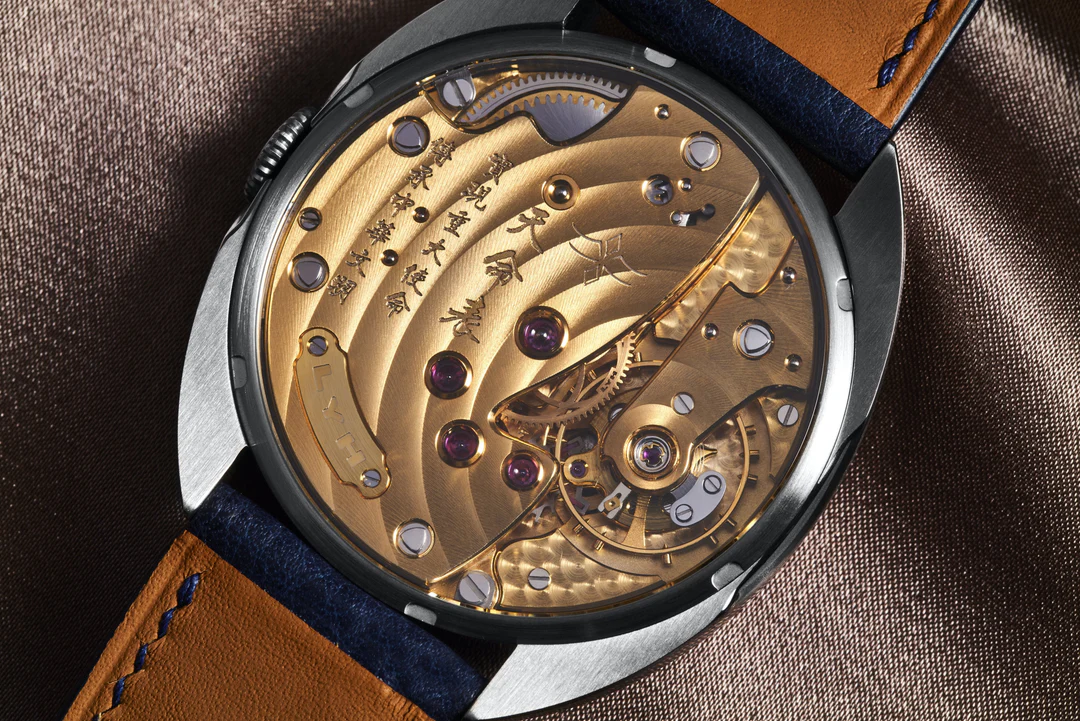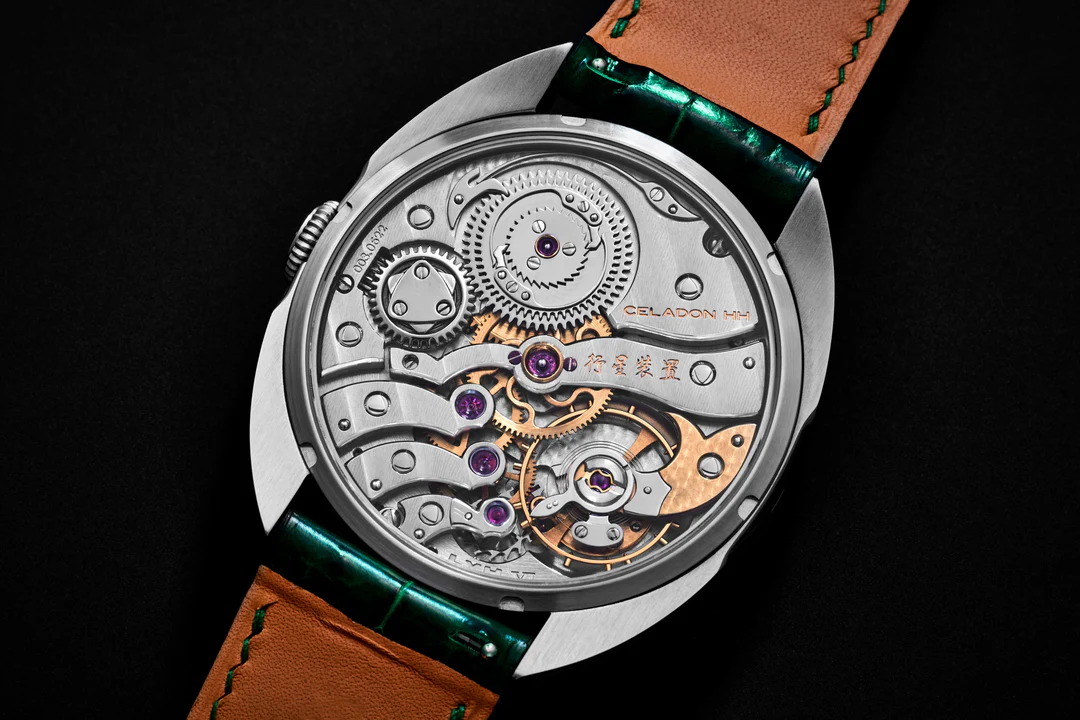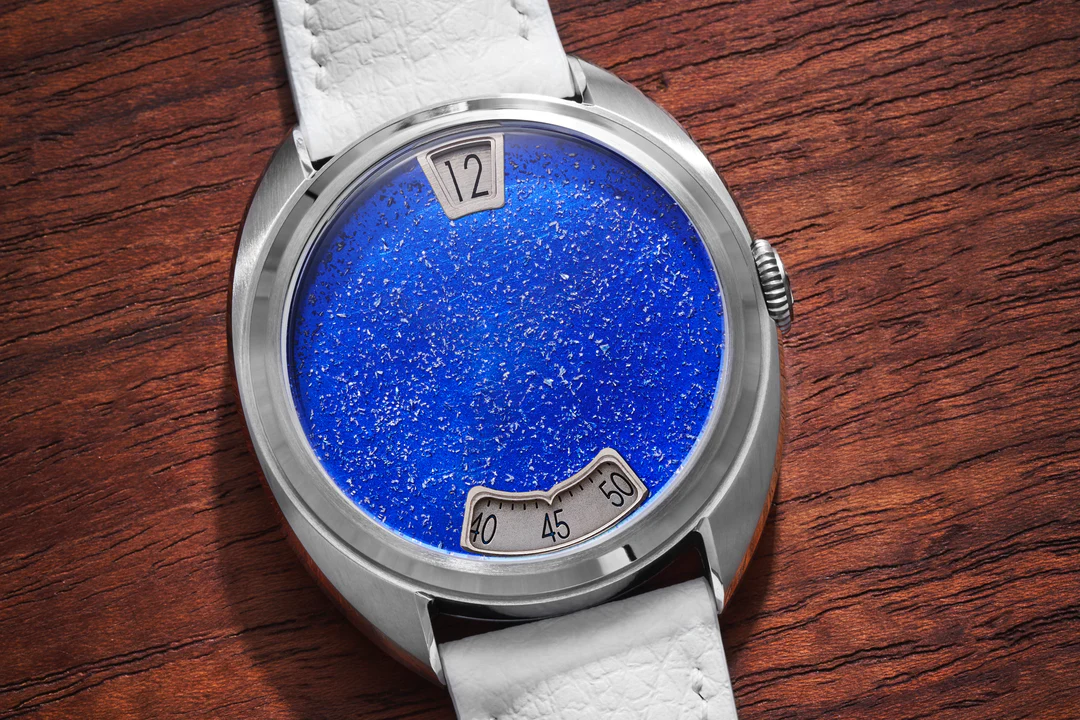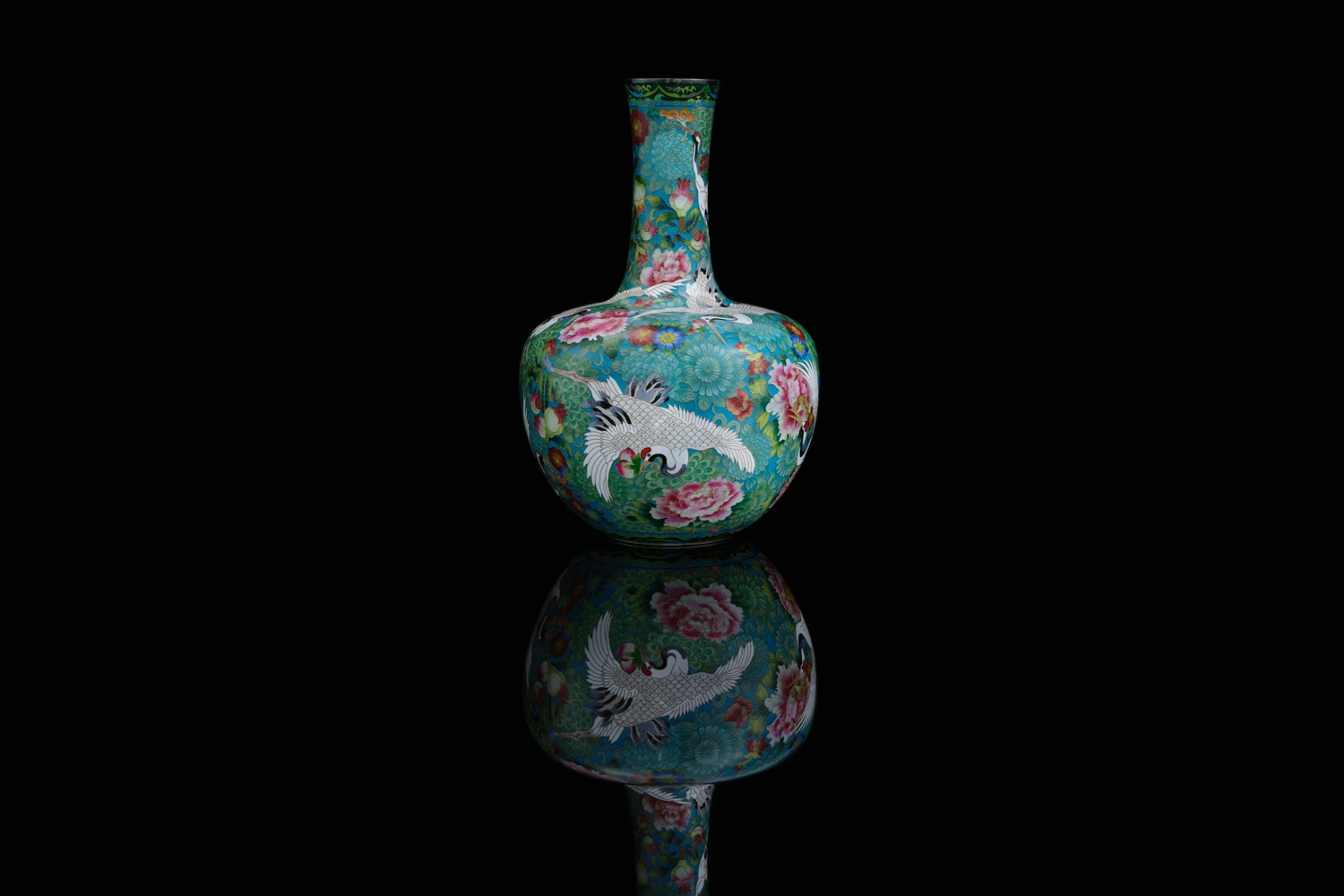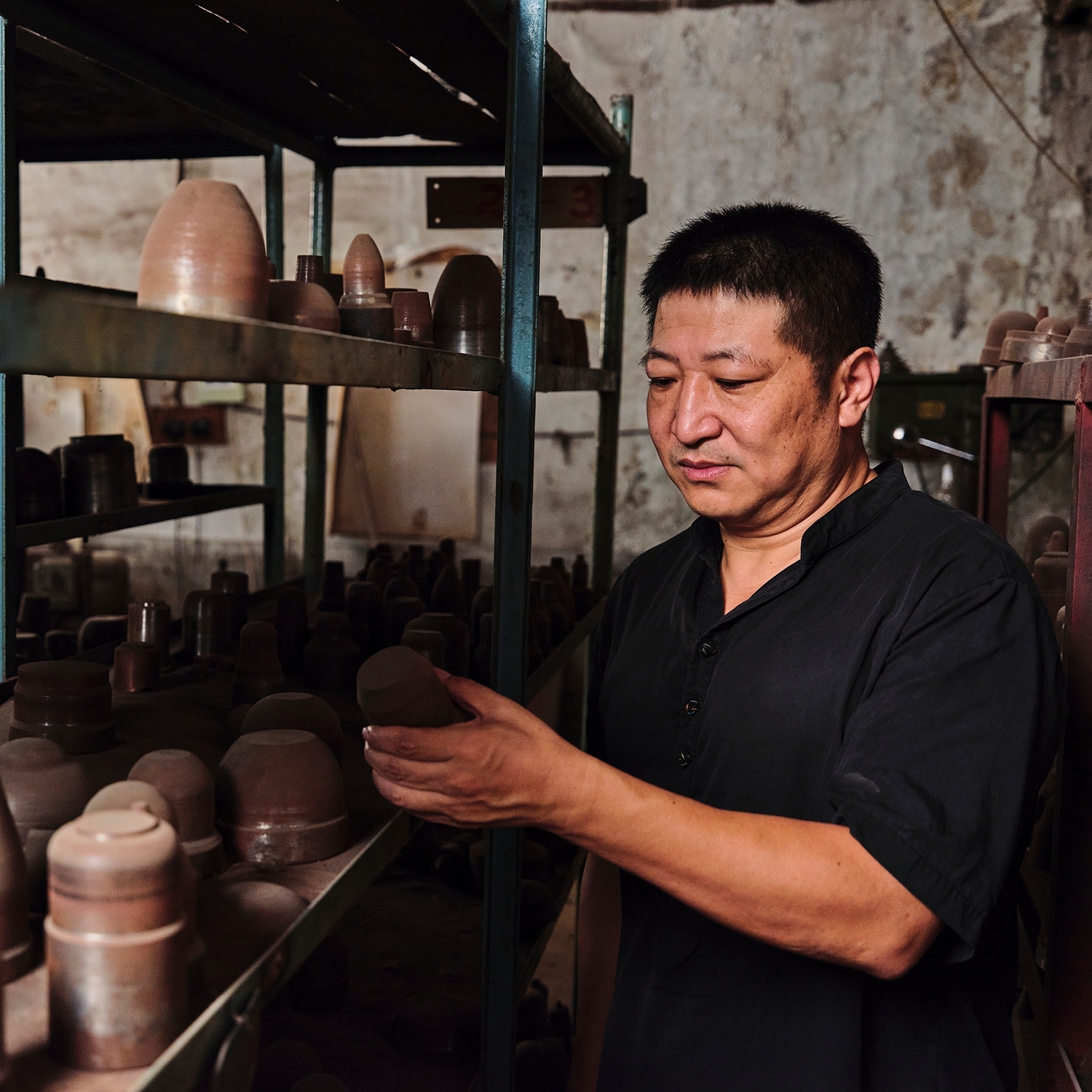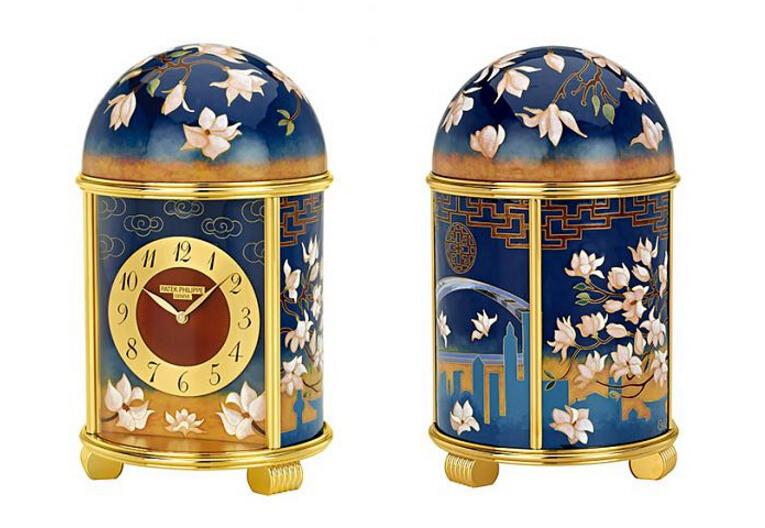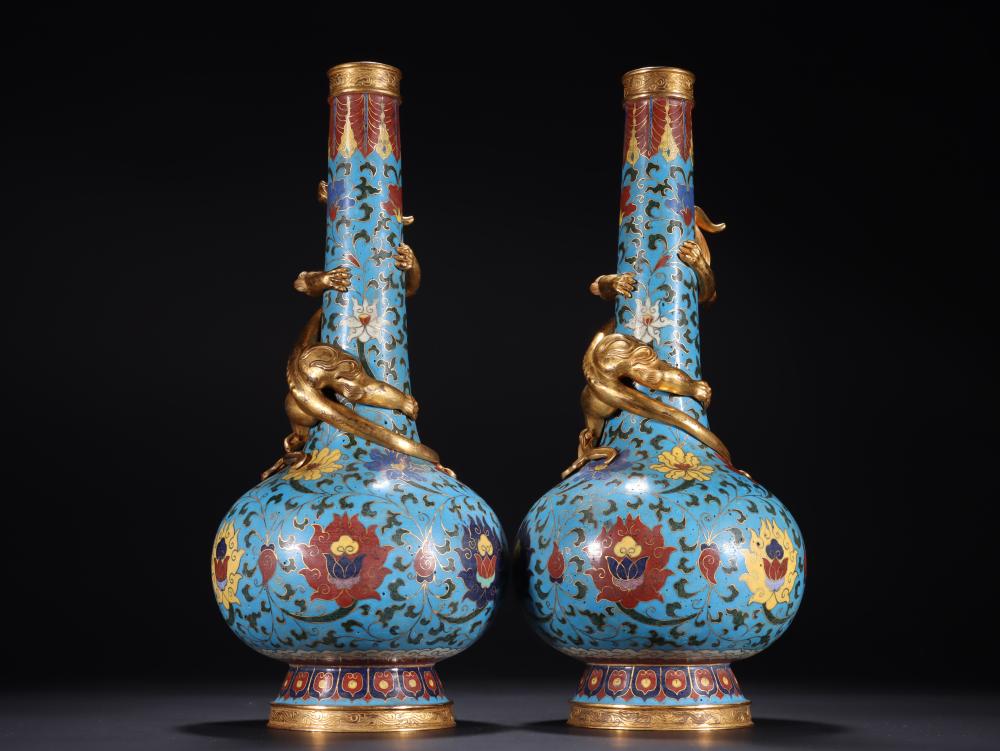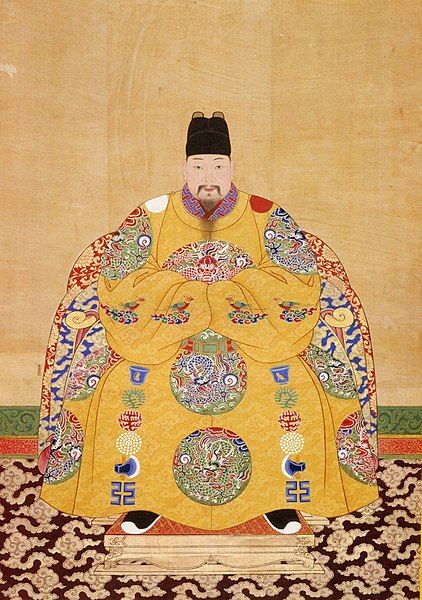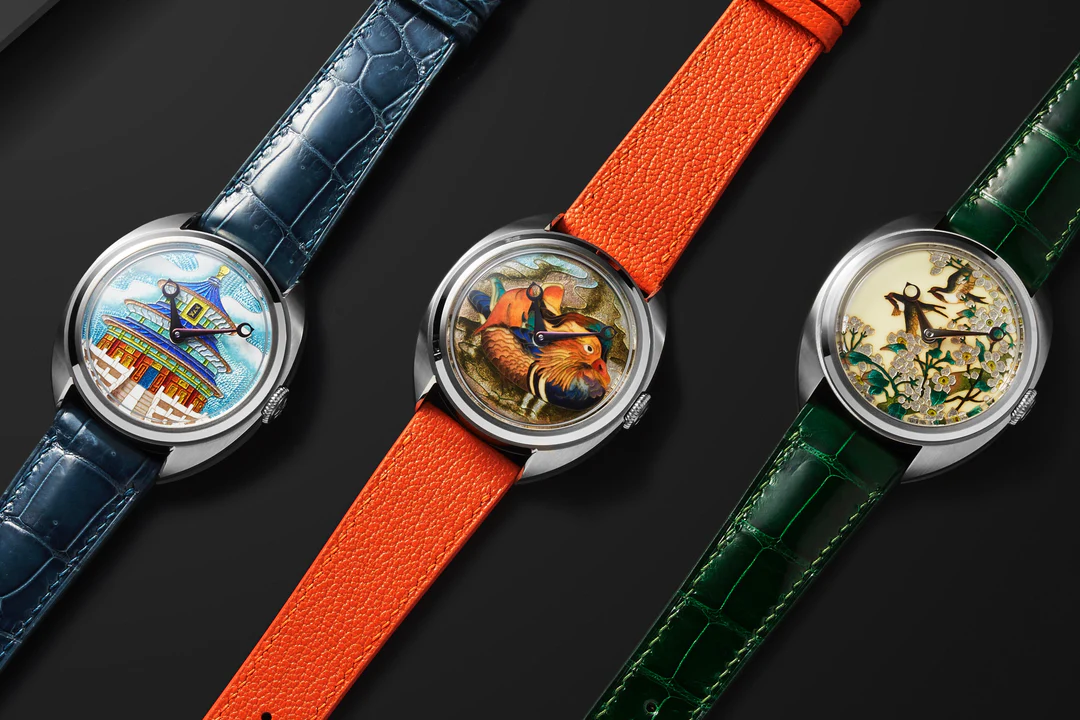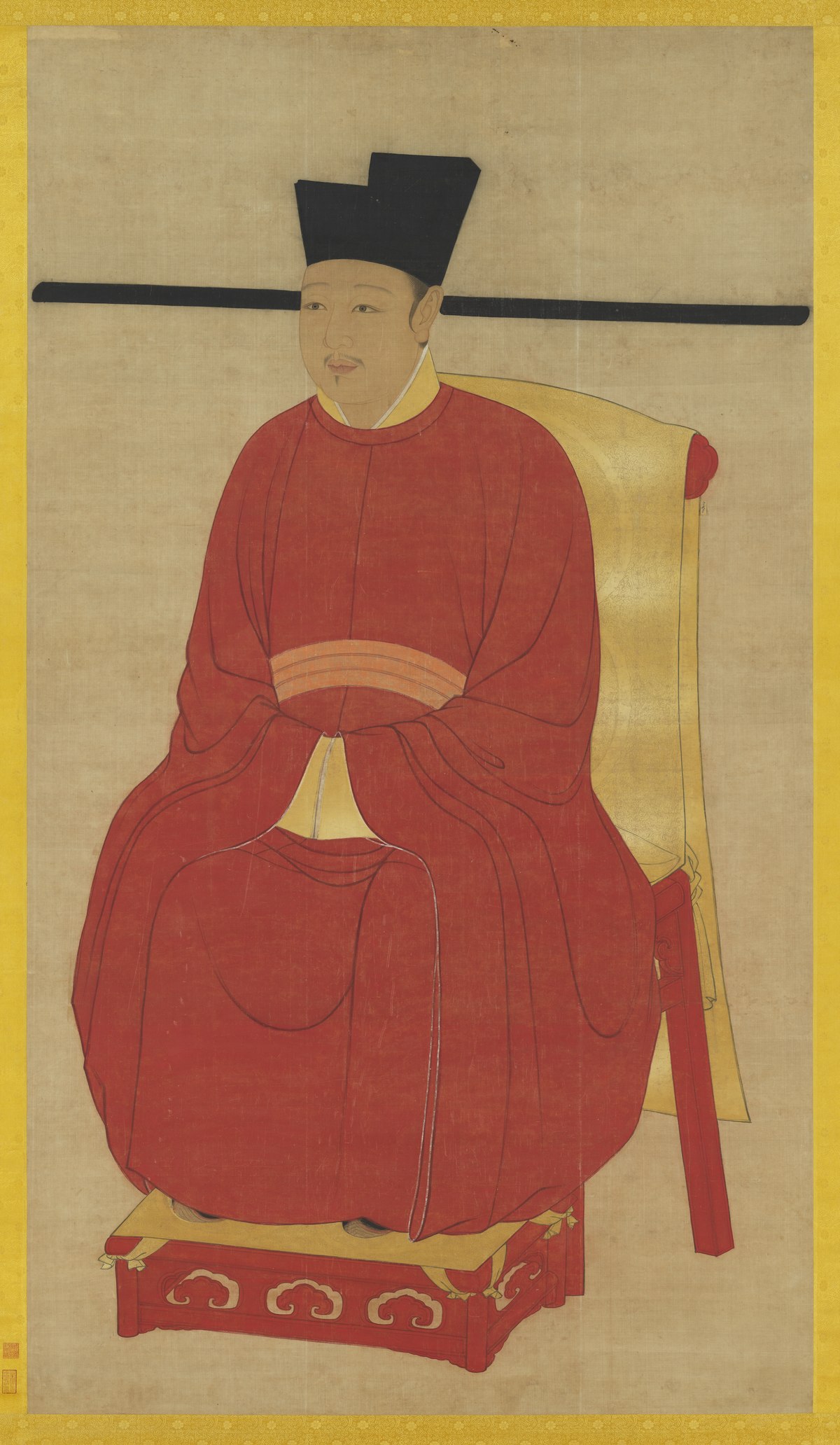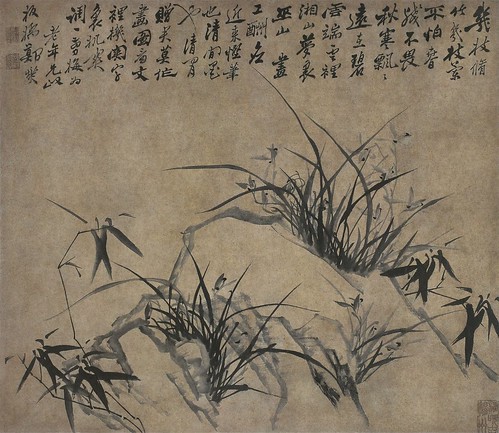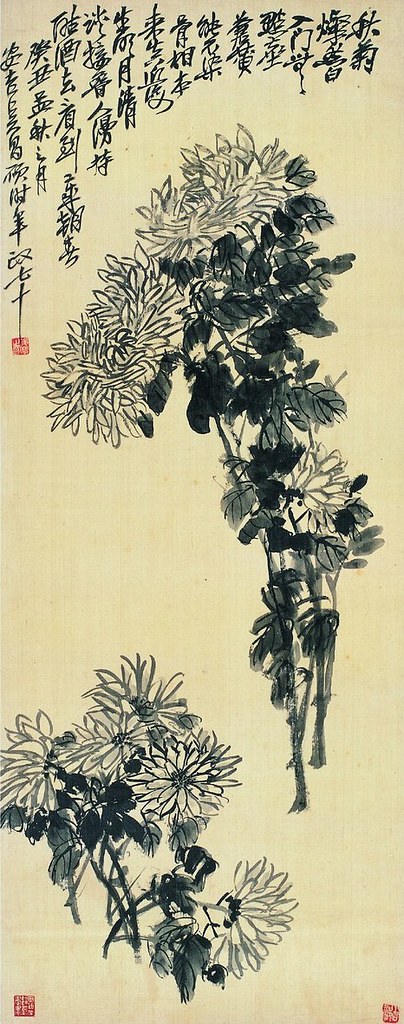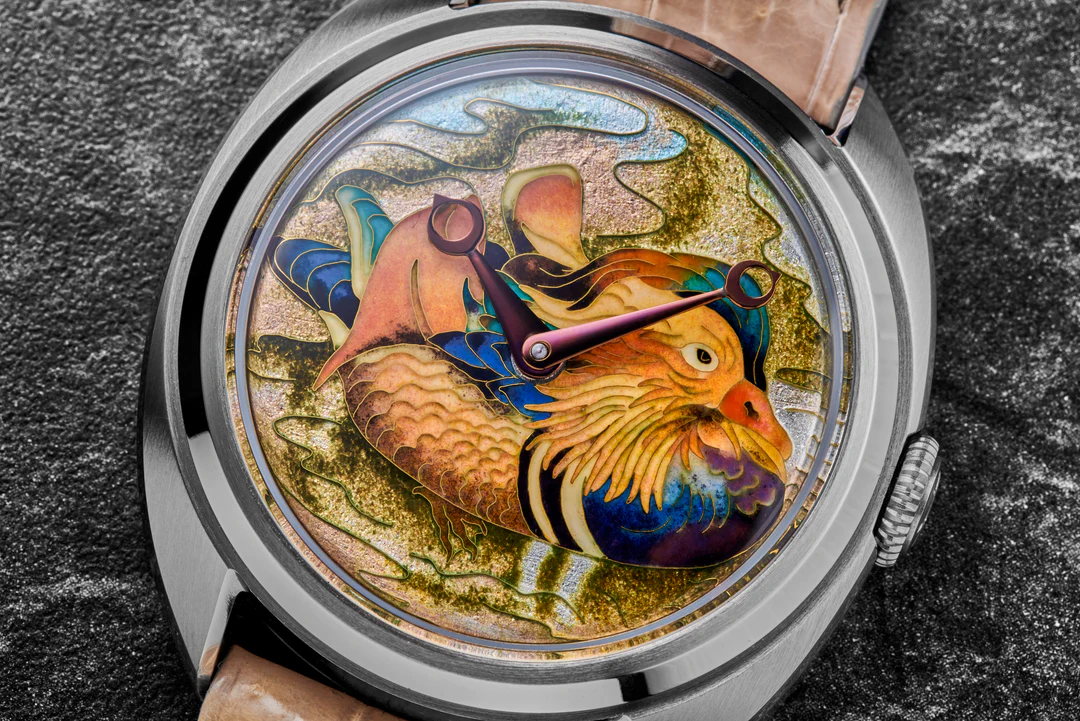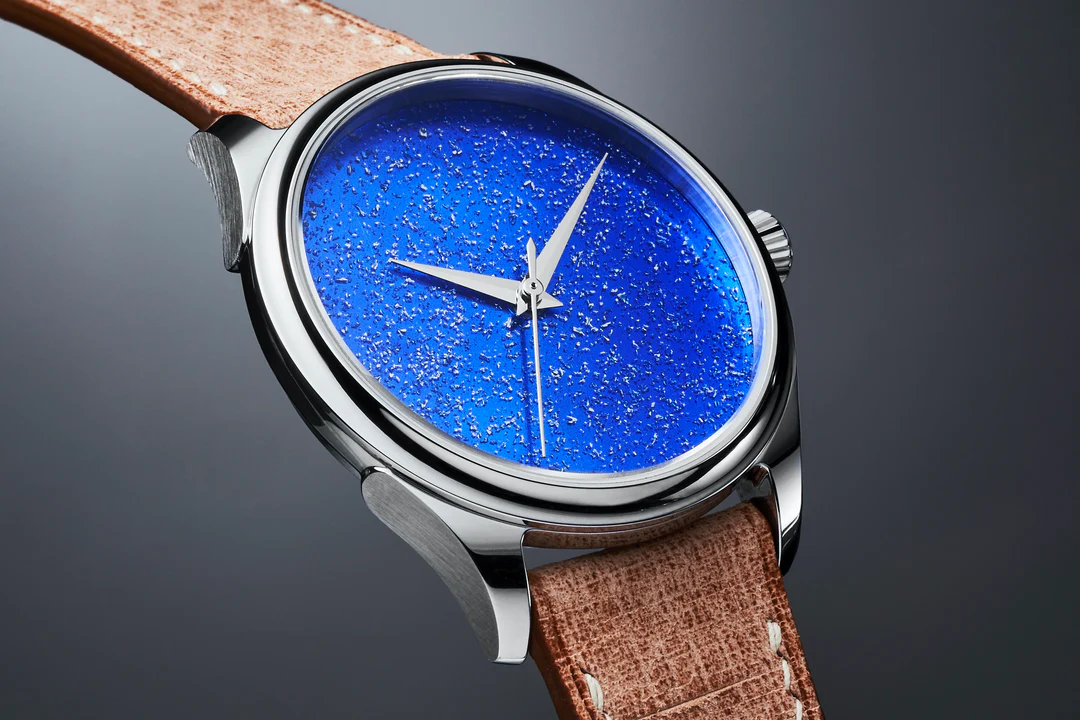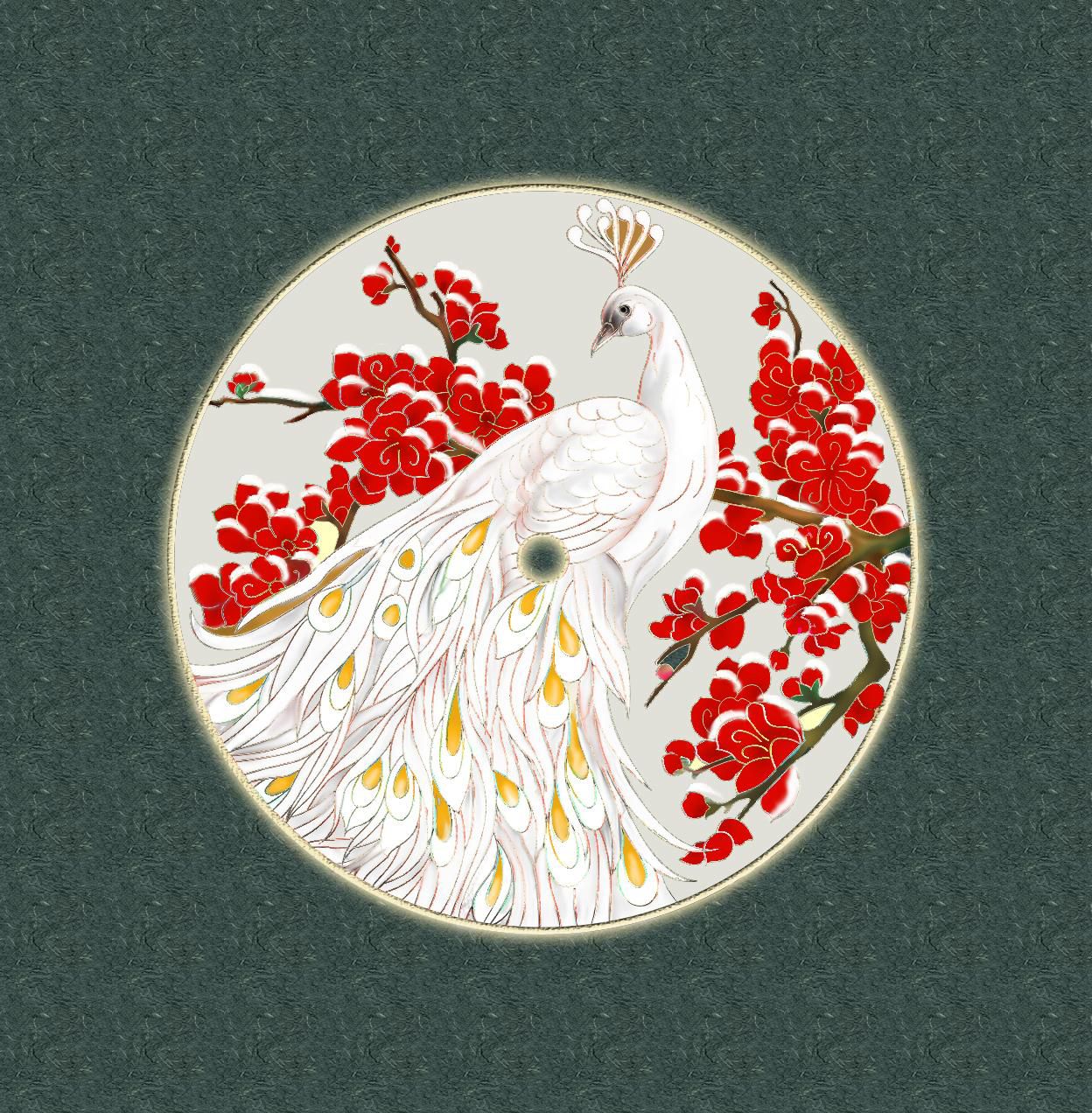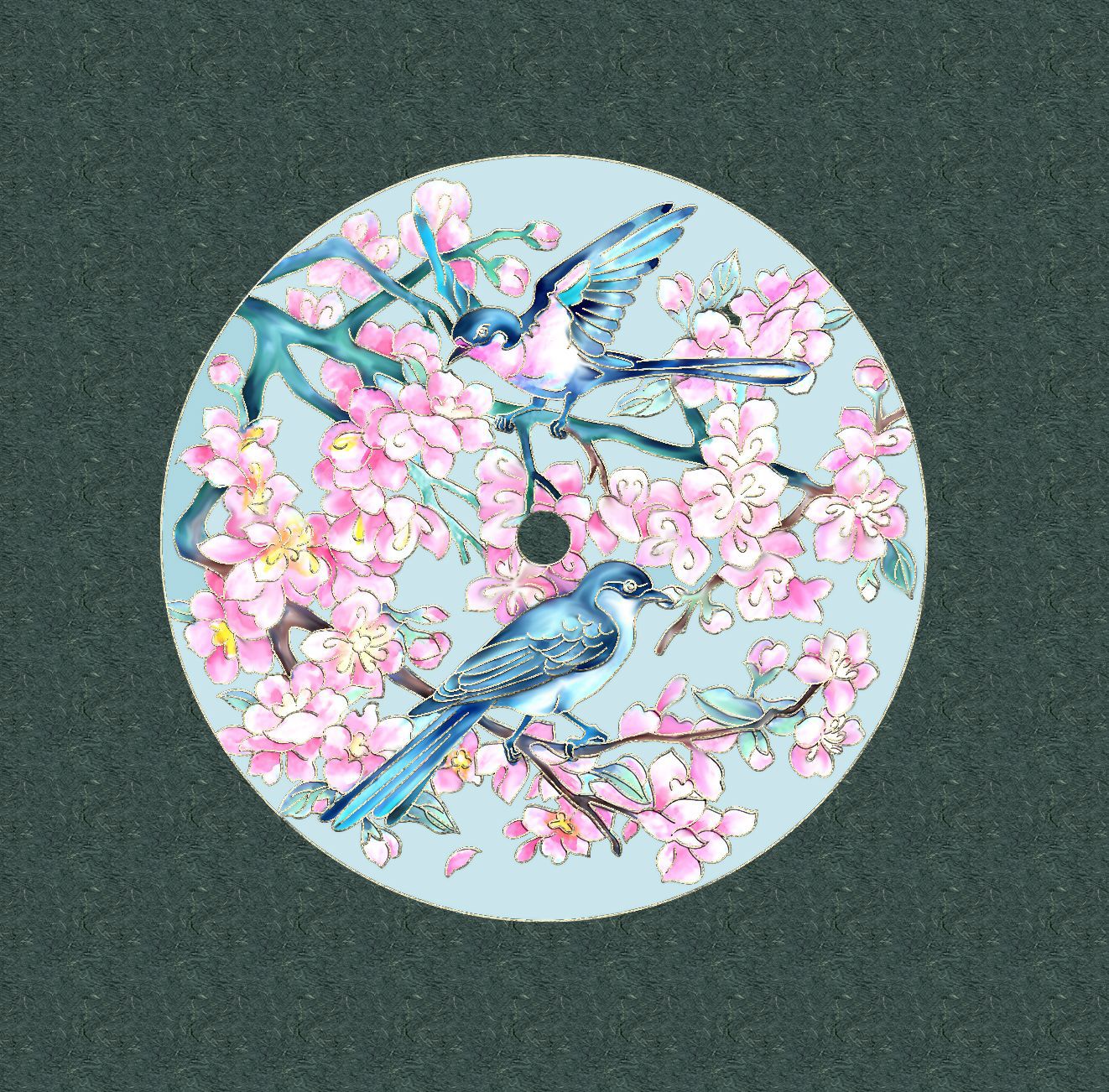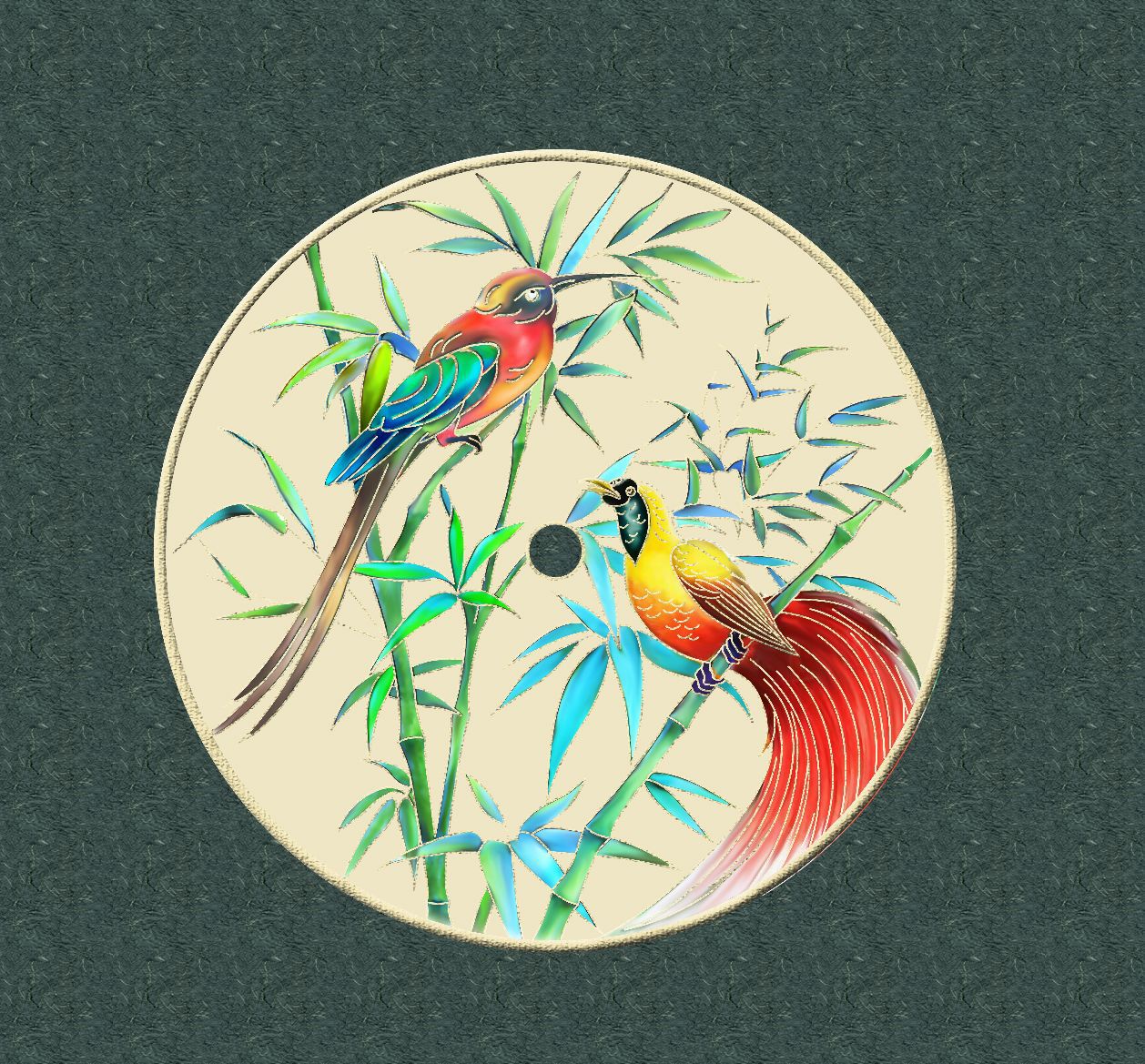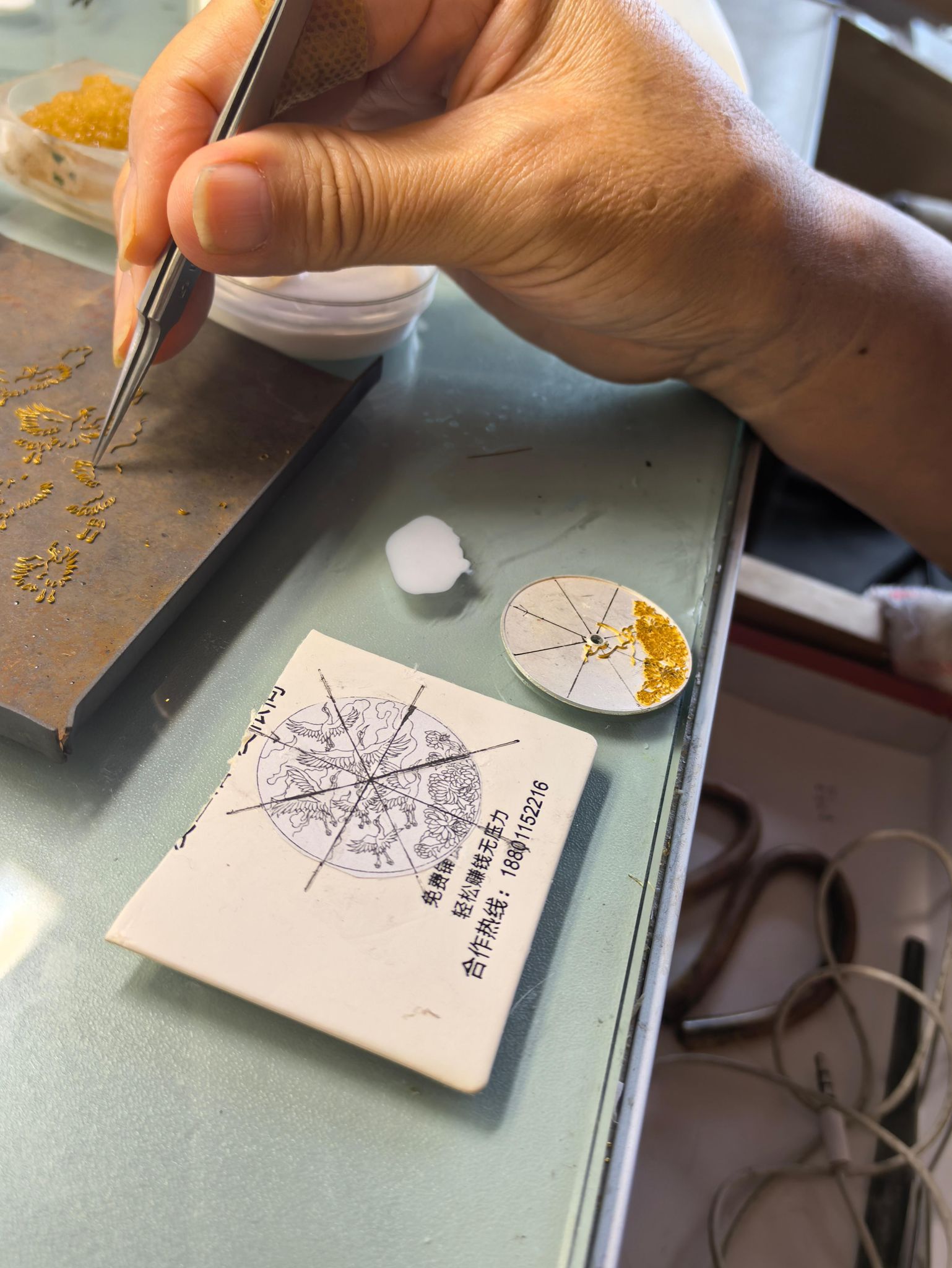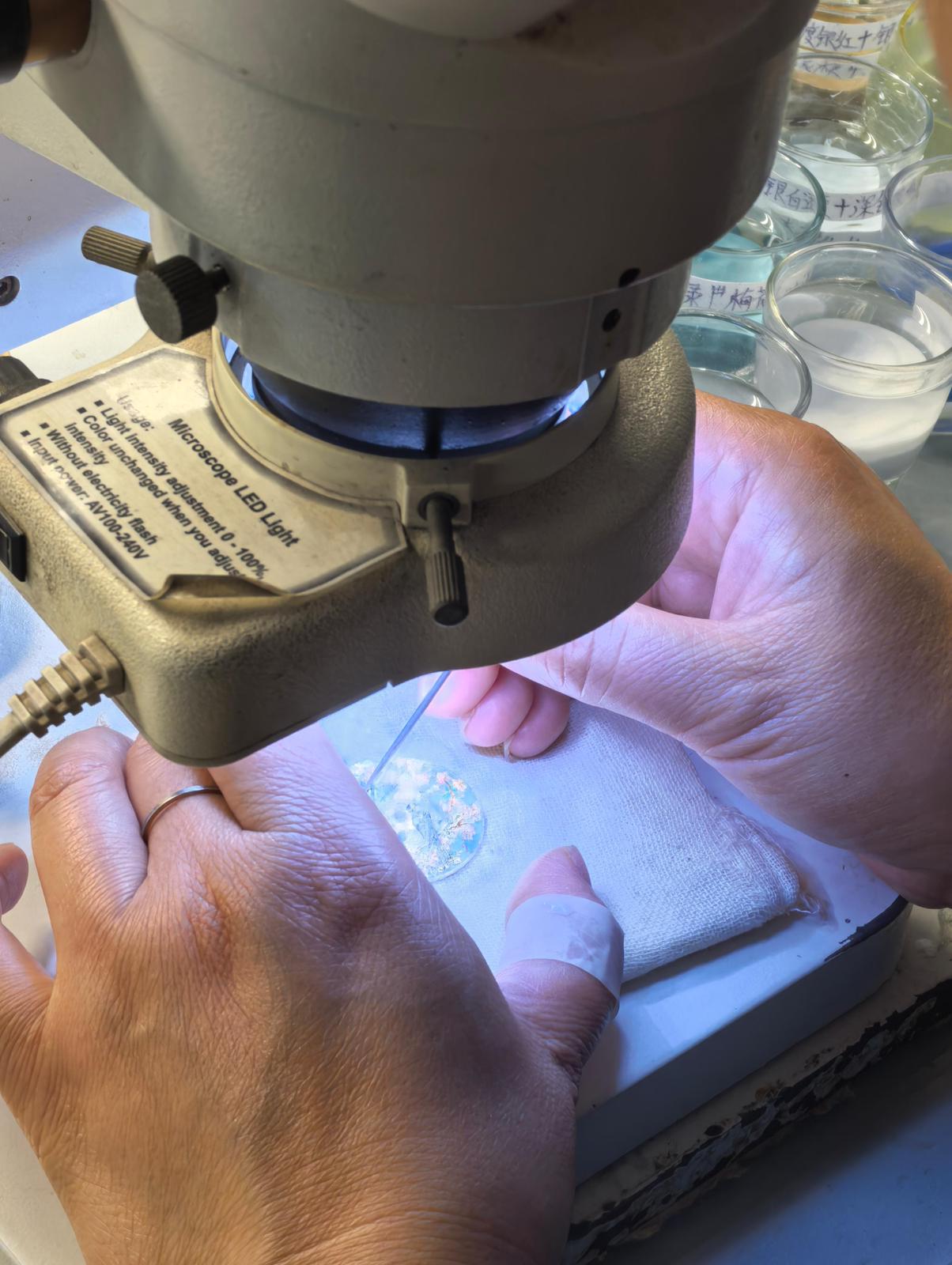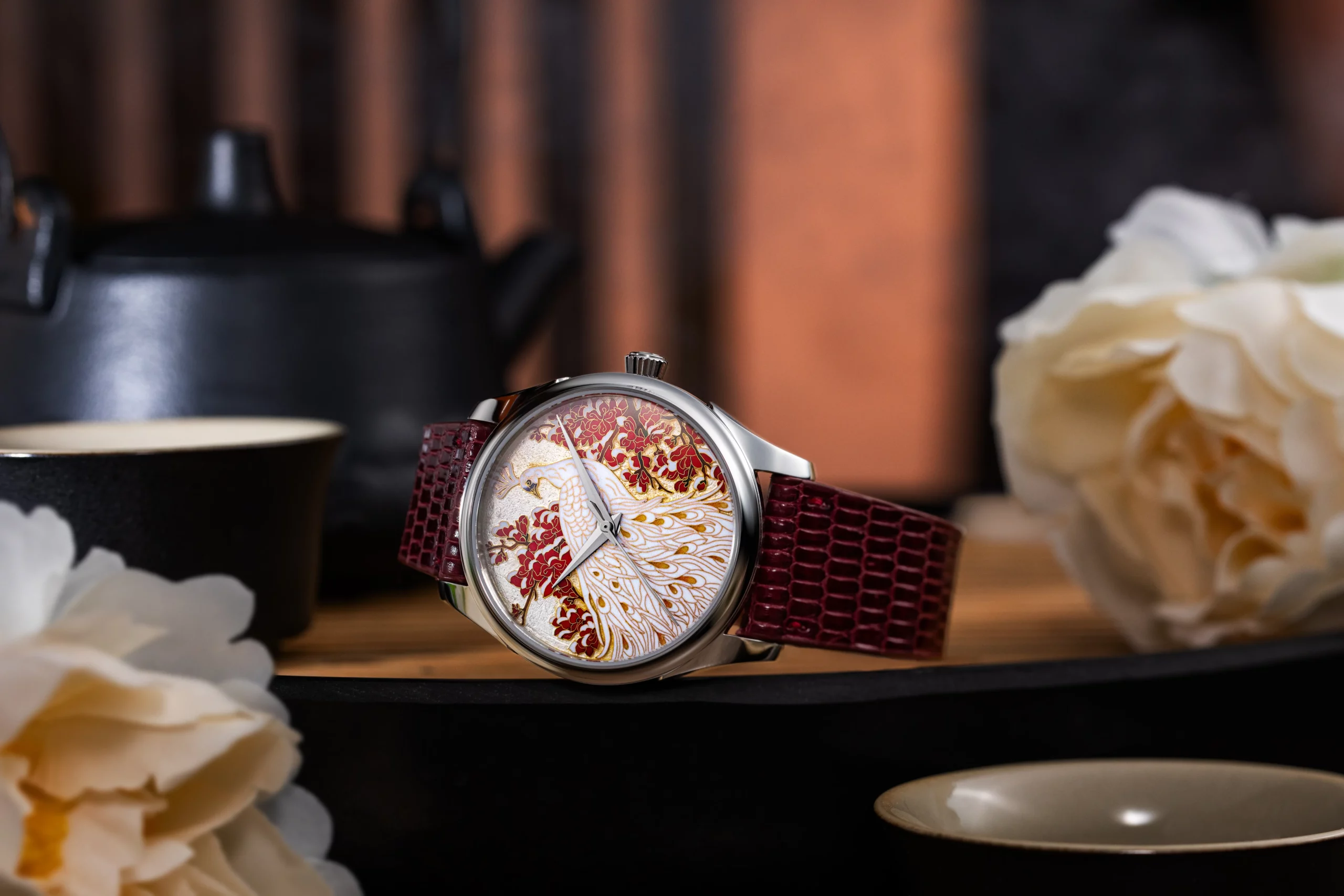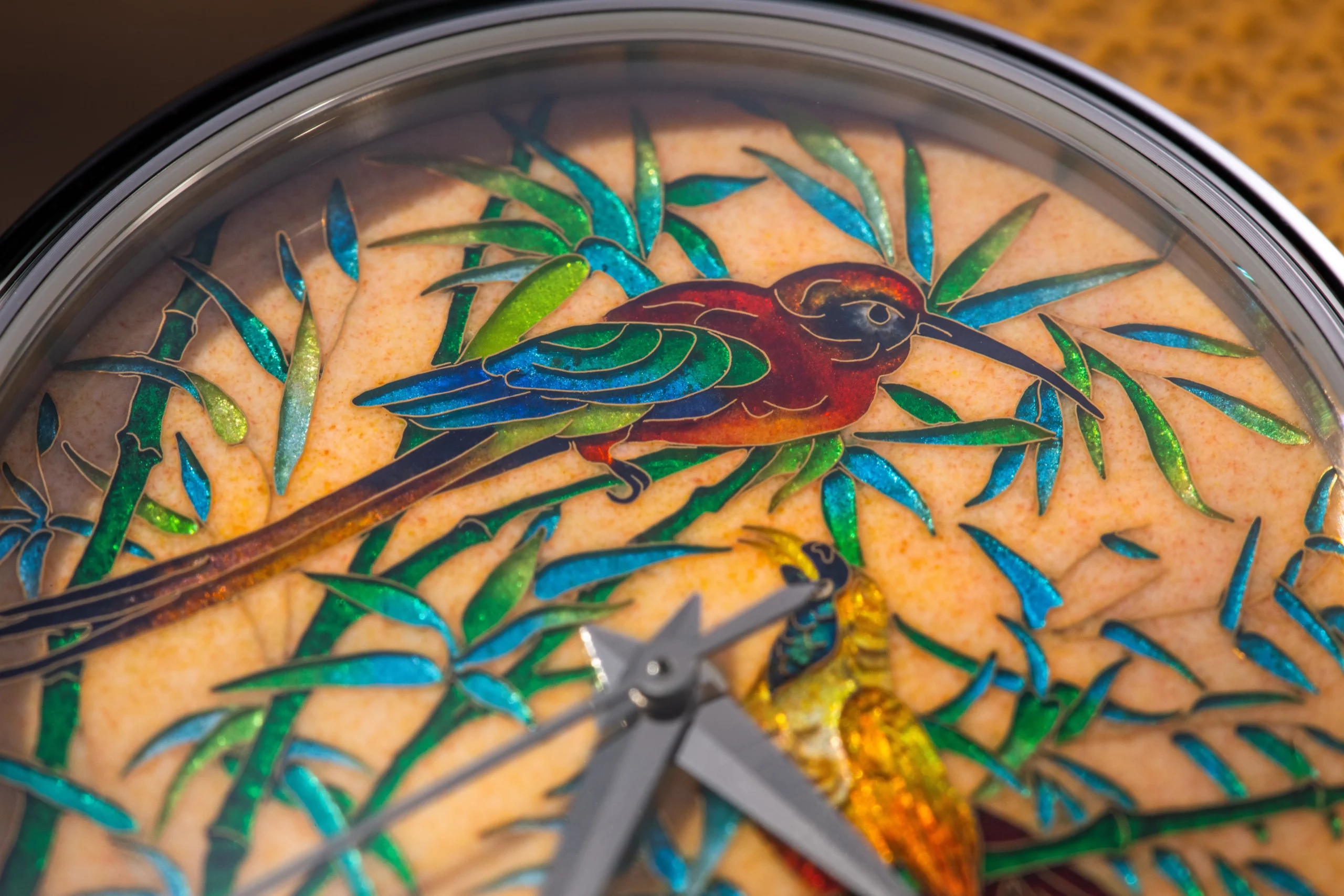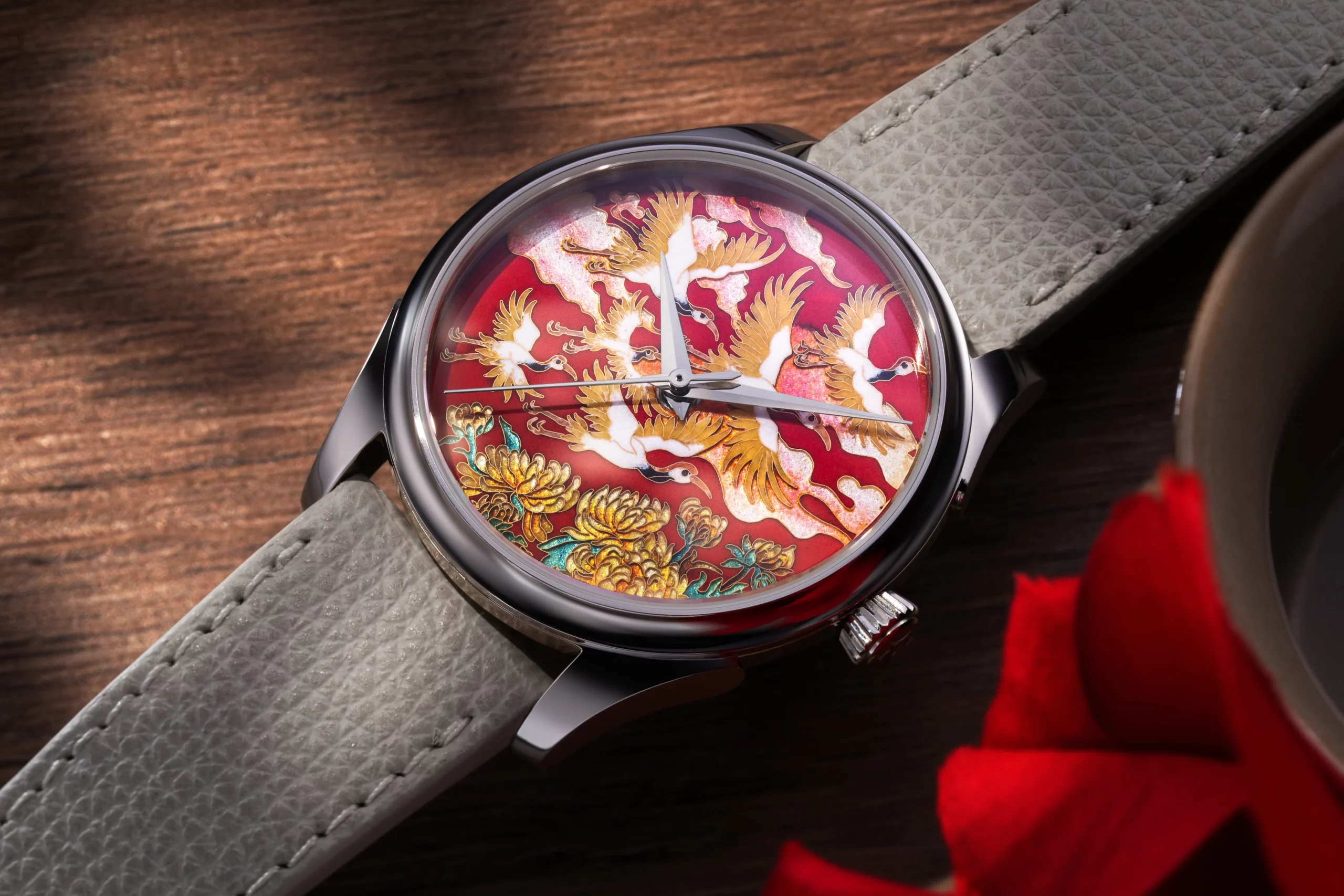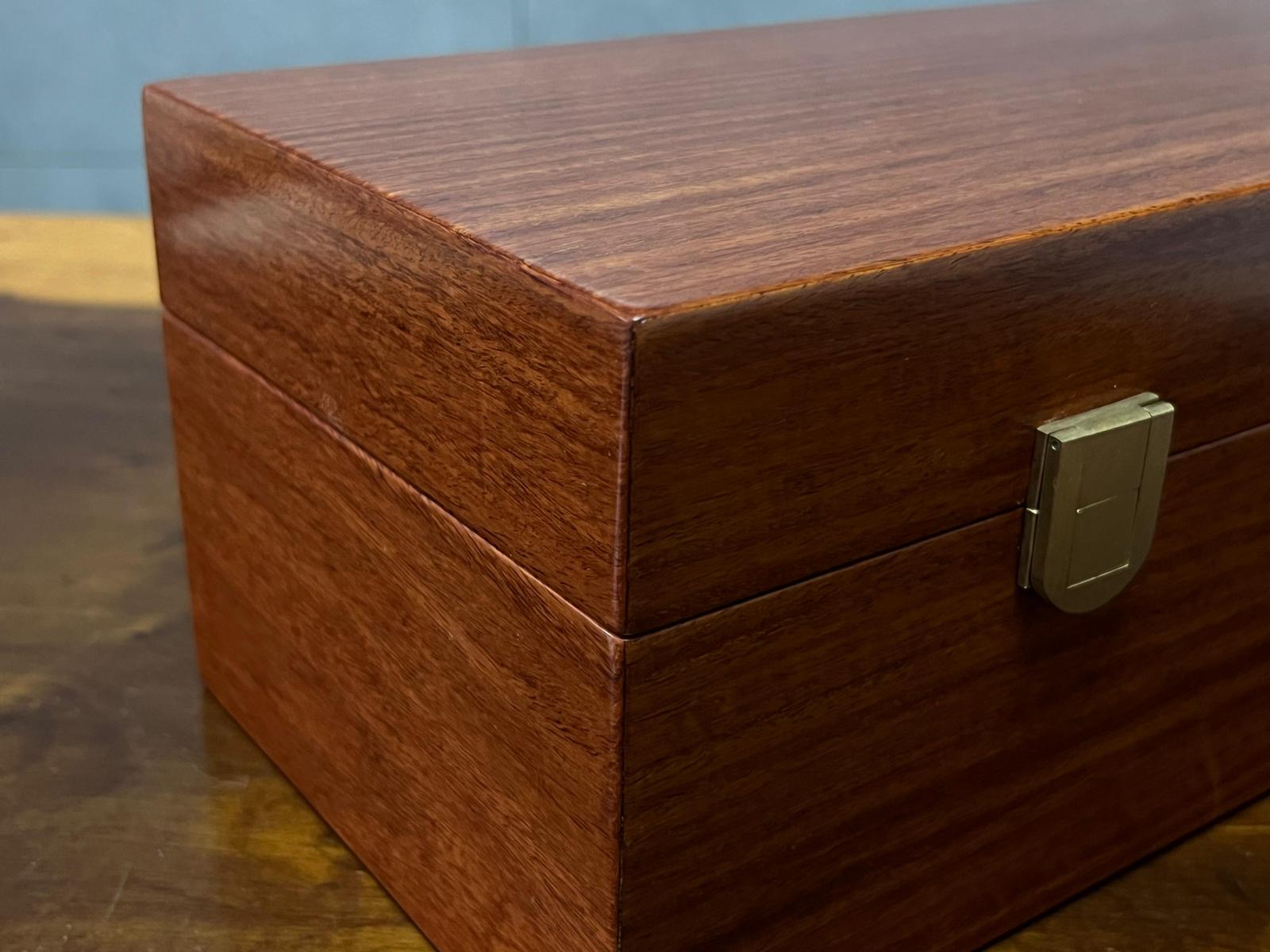The creation process begins with shaping a mold from red copper. Artisans then sketch the design onto the mold and apply fine copper wires to form the decorative outlines. These cells are filled with colorful enamel paste, followed by repeated kiln-firing, polishing and gilding to achieve the final piece. Jing tai lan masterfully fuses the techniques of bronze work and porcelain artistry, incorporating traditional Chinese painting, sculpture and engraving. It is considered one of the most intricate and demanding enameling techniques.
Over time, jing tai lan evolved independently of other global enamel traditions, reaching its peak with lavish commissions from the Imperial Court of China. Numerous provinces later developed their own distinctive schools of cloisonné, further enriching this celebrated craft and later, became popular in the west as well.
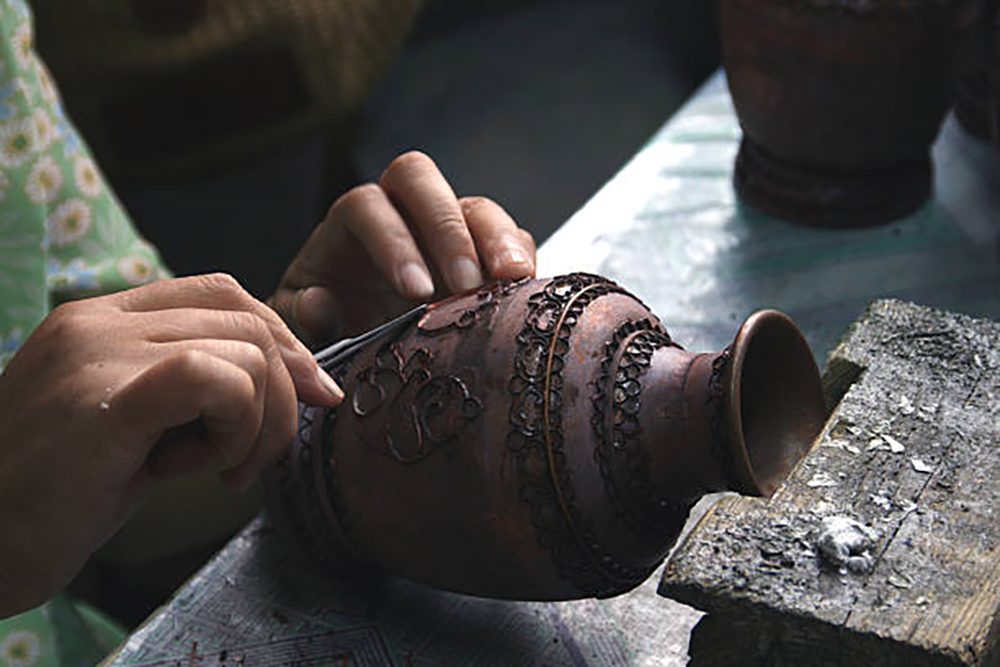
Applying fine wires to form outlines for decoration
In contrast, in Europe, enamel watch dials first appeared in clocks and pocket watches during the 17th and 18th centuries, but it wasn’t until the 1940s and 1950s that cloisonné enamel dials truly flourished in wristwatches — a period widely regarded as the golden age for this intricate art form in horology.
One of the most renowned producers of cloisonné enamel dials was Stern Frères, a dial manufacturer founded by the Stern family, who later acquired Patek Philippe. Beginning at the end of the 1940s, Stern Frères crafted some of the most iconic and collectible enamel dials ever made, contributing to timepieces that would later become auction legends.
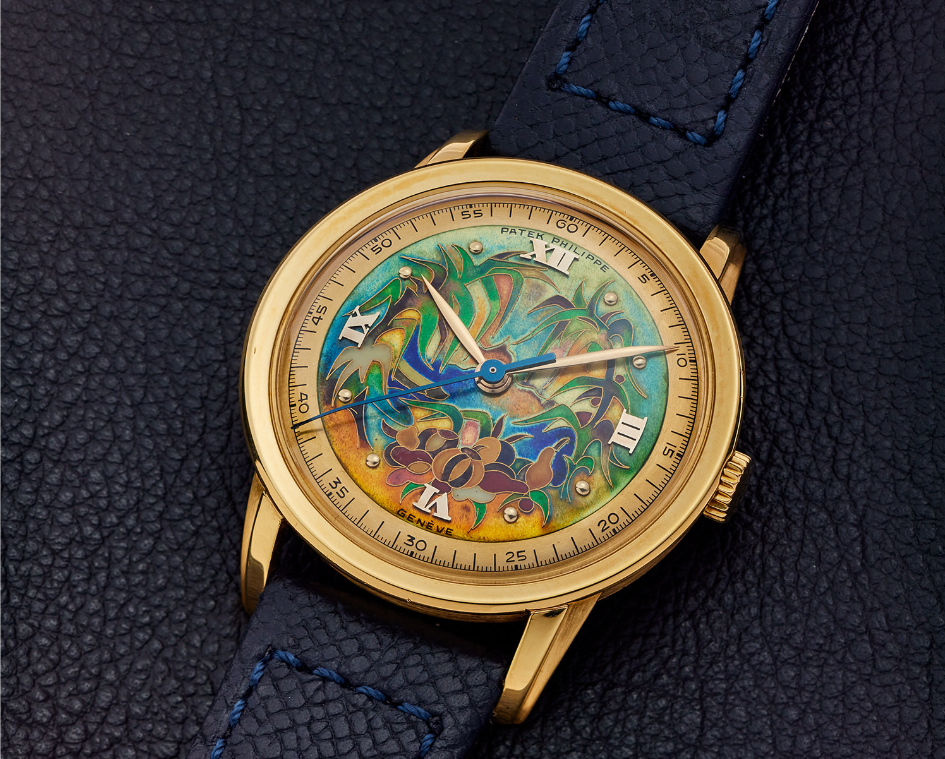
A Patek Philippe Ref. 2481 from circa 1952, featuring a cloisonné enamel “Pristine Forest” dial, was sold by Phillips New York in 2023 for USD 1,117,600, credit: Phillips Auctions
The term cloisonné — derived from the French word cloison, meaning “partition” — refers to the wires used to outline the decorative motifs before filling them with enamel. The process is laborious and demands exceptional craftsmanship, with very few artisans capable of executing it at a high level. As a result, production was extremely limited. Across all watch brands, only a few hundred cloisonné enamel wristwatches were ever made, making them prized rarities in the world of fine watchmaking.


